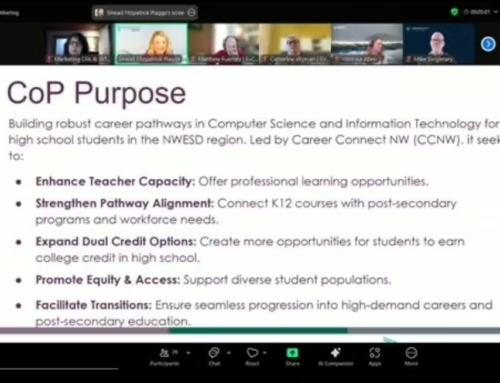 “How do I support my students who struggle with writing?” is a common question teachersoften ask me. Walk into any classroom during writer’s workshop, and you will notice a wide range of student engagement. While some happily compose on a computer or in their writer’s notebook, there are also students who seem to avoid writing at all costs, those who stare at the blank page unsure where to start, and even one or two who emphatically state, “I hate writing.”
“How do I support my students who struggle with writing?” is a common question teachersoften ask me. Walk into any classroom during writer’s workshop, and you will notice a wide range of student engagement. While some happily compose on a computer or in their writer’s notebook, there are also students who seem to avoid writing at all costs, those who stare at the blank page unsure where to start, and even one or two who emphatically state, “I hate writing.”
There are many reasons why students may be reluctant to write. Some routinely struggle to come up with ideas and become mired in writer’s block, while others grapple with feeling that their writing has to be “perfect” in order to compose. For some students, the physical act of writing is actually a painful, arduous process due to motor skills issues. Finally, some students simply do not view themselves as writers. Below is a list of ideas and strategies that can help establish a positive writing environment that helps support ALL writers.
Tap into Their Visual Side
Visual images surround us and often capture student interest, which makes them a valuable tool to promote writing. Here are some ideas:
- Project a work of art on the screen and ask students to observe what they notice and then produce a list of descriptive words and phrases.
- Cut out advertisements or photographs from magazines and have students create a caption that captures the ideas communicated visually.
- Provide students with an array of funny or puzzling images and let them choose one they like. Ask them to create a short story inspired by the image.
Foster Student Voice and Choice
Students sometimes view writing as a teacher-generated prompt to be answered or an assignment to complete without feeling that they have a lot of control over the topic or form. While teachers do need to explicitly teach and support their students in writing narratives, opinion/arguments, and informational/explanatory pieces as identified in our Washington ELA standards, there is still room for considerable student choice within these forms.
- Allow students to choose the topic of their informational/explanatory piece. This can engage reluctant writers and motivate them to research their topic and write about their learning.
- Encourage student-generated topics for opinion/argument writing. Ask students their opinions about homework, the use of cell phones in school, or whether school should be year-round, and they have plenty to say! Teaching them to provide evidence to support these opinions results in writing that is standards-based and promotes student voice and choice.
Writing Floats on a Sea of Talk
“Reading and writing float on a sea of talk.” This quote by James Britton is 46 years old and still highly relevant today. Providing time for students to talk and explore their ideas throughout the entire writing process creates a classroom environment where students learn that sharing their thinking, learning from each other, and revising their original product is a valuable process.
- Have students talk out their ideas with a classmate or teacher before completing their pre-write. This can support students who struggle with getting started when faced with a blank page.
- Encourage students to read aloud their writing and record it. When students read their own writing silently, they often do not notice errors or areas for editing or revising that they do catch when listening to their recorded voice.
- Explicitly teach students how to provide meaningful feedback to each other. In the primary grades this might include having students provide a “Glow and a Grow” to their partner, while in upper grades students might provide feedback through a rubric or other feedback tool.
Include Short Pieces of Writing into Your Classroom Routine
Writing is much more than just the three major forms of writing. Short pieces of writing are often better received by students for whom writing is a challenge. The same students who might shut down when facing a long essay often excel when the writing task is shorter.
- Teach poems! Humorous rhyming couplets, limericks, haiku, and “lowku” (a haiku with a gross topic) are all poetic forms that grab students’ attention, encourage voice, and promote the use of vivid vocabulary.
- Let them Tweet. Ask students to write out their key learnings from a lesson or unit on an exit slip or on the computer (no more than 140 characters!) As an extension, have them create hashtags that summarize their message. Not only is this a valuable formative assessment, but the short amount of text is often well-received by students.
- Explicitly teach students how to write a particular aspect of a written form, such as a conclusion to an informational piece. Provide them with an informational piece that is complete except that it lacks a conclusion. Have them write just the conclusion, and then have them share and reflect upon what makes an effective conclusion. This works well with introductions, too!
The new year is a great time to reflect upon your writing program and to set a resolution to empower all students to grow and progress as writers. Happy 2017!
If you are interested in helping your students view themselves as published authors and to provide them the opportunity to learn from real-life authors, consider attending the Young Author’s Conference!
– Ed


